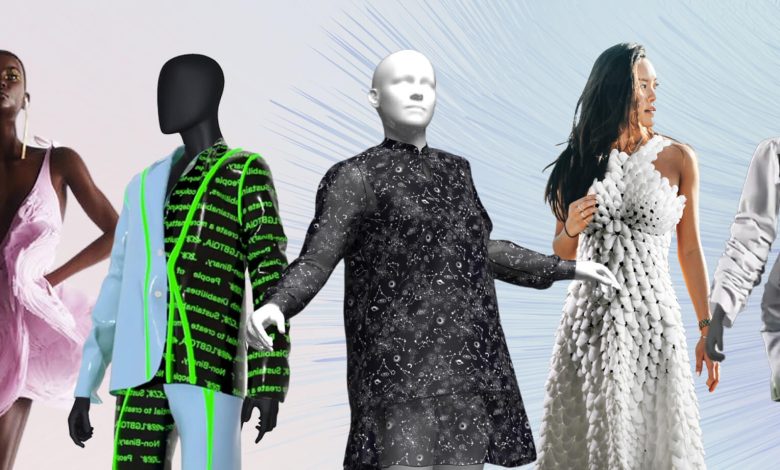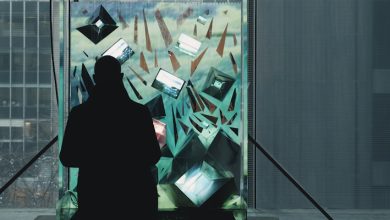The Future of NFTs in Fashion

- Exploring the intersection of NFTs and fashion
- How NFTs are revolutionizing the fashion industry
- The potential impact of NFTs on the future of fashion
- Challenges and opportunities for NFTs in the fashion world
- Innovative ways designers are incorporating NFTs into their collections
- The rise of digital fashion and its connection to NFTs
Exploring the intersection of NFTs and fashion
NFTs have been making waves in the fashion industry, offering a new way for brands to engage with consumers and create unique digital assets. The intersection of NFTs and fashion opens up a world of possibilities for designers, artists, and fashion houses to explore. By leveraging blockchain technology, fashion brands can create limited edition digital collections that are one-of-a-kind and highly sought after by collectors.
One of the key benefits of NFTs in fashion is the ability to verify the authenticity and ownership of digital assets. This can help combat issues such as counterfeiting and intellectual property theft, providing a secure way for consumers to purchase and own digital fashion items. Additionally, NFTs allow for greater transparency in the supply chain, giving consumers insight into the production process and sustainability practices of fashion brands.
Furthermore, NFTs offer a new revenue stream for fashion brands, allowing them to monetize digital creations and reach a global audience of collectors and enthusiasts. By tokenizing digital assets, brands can create scarcity and exclusivity, driving up demand and value for their NFT collections. This can also lead to new collaborations and partnerships within the fashion industry, as brands look to leverage the power of blockchain technology to create innovative and unique digital experiences for consumers.
How NFTs are revolutionizing the fashion industry
NFTs are making waves in the fashion industry, revolutionizing the way we perceive and interact with digital assets. These non-fungible tokens have opened up a world of possibilities for designers, brands, and consumers alike. By tokenizing digital fashion items, such as virtual clothing and accessories, NFTs are enabling creators to establish ownership and scarcity in the digital realm.
One of the key advantages of NFTs in fashion is the ability to authenticate and verify the originality of digital designs. This helps combat issues like plagiarism and counterfeiting, providing a level of trust and transparency that was previously difficult to achieve in the digital space. Additionally, NFTs allow for unique customization and personalization options, giving consumers the opportunity to own exclusive digital fashion pieces that reflect their individual style.
Furthermore, NFTs are creating new avenues for monetization in the fashion industry. Designers can sell their digital creations as NFTs, opening up new revenue streams and expanding their reach to a global audience. Collectors and fashion enthusiasts can also invest in NFT fashion pieces, creating a new market for digital collectibles that hold both cultural and monetary value.
Overall, NFTs are reshaping the fashion industry by bridging the gap between physical and digital fashion, offering new opportunities for creativity, authenticity, and innovation. As the technology continues to evolve, we can expect to see even more exciting developments in the intersection of NFTs and fashion in the future.
The potential impact of NFTs on the future of fashion
NFTs have the potential to revolutionize the fashion industry in ways we have never seen before. These digital assets can provide a new level of authenticity and ownership for fashion enthusiasts, allowing them to truly own a piece of their favorite designer’s work. This could lead to a shift in how we perceive and consume fashion, with NFTs becoming a valuable part of the industry.
One of the key impacts of NFTs on the future of fashion is the ability to create unique and limited-edition pieces that are easily verifiable as authentic. This could help combat issues such as counterfeiting and intellectual property theft, giving designers more control over their creations. Additionally, NFTs can open up new revenue streams for designers, allowing them to sell digital versions of their designs or even create virtual fashion shows.
Furthermore, NFTs can also democratize the fashion industry by allowing smaller designers and independent creators to gain recognition and reach a wider audience. By leveraging blockchain technology, these designers can showcase their work in a secure and transparent way, building trust with consumers and collectors alike. This could lead to a more diverse and inclusive fashion landscape, where creativity and innovation are rewarded.
Challenges and opportunities for NFTs in the fashion world
There are both challenges and opportunities for NFTs in the fashion world. One of the main challenges is the issue of copyright and intellectual property rights. As NFTs are digital assets, it can be difficult to prove ownership and authenticity, which is crucial in the fashion industry where counterfeiting is rampant. However, this challenge also presents an opportunity for designers to use NFTs as a way to authenticate their creations and protect their intellectual property.
Another challenge is the environmental impact of NFTs, as they require a significant amount of energy to create and maintain. This can be a concern for fashion brands looking to adopt NFTs as part of their sustainability efforts. On the other hand, this challenge also opens up opportunities for brands to explore more eco-friendly ways of creating and selling NFTs, such as using blockchain technology that is less energy-intensive.
One of the biggest opportunities for NFTs in the fashion world is the ability to create unique and limited-edition digital fashion items that can be bought, sold, and traded on the blockchain. This opens up a whole new market for fashion enthusiasts who are looking for exclusive pieces that are not available in traditional stores. Additionally, NFTs can also be used to create virtual fashion experiences, such as virtual fashion shows and digital clothing that can be worn in virtual worlds.
Innovative ways designers are incorporating NFTs into their collections
Designers are finding innovative ways to incorporate NFTs into their collections, revolutionizing the fashion industry. By leveraging blockchain technology, they are able to create unique digital assets that can be bought, sold, and traded securely. This opens up a whole new world of possibilities for both designers and consumers.
- One way designers are using NFTs is by creating digital clothing items that can be worn in virtual worlds or on social media platforms. This allows consumers to express themselves in new and exciting ways, without the need for physical garments.
- Another popular trend is the use of NFTs to authenticate limited-edition pieces. By minting a digital certificate of authenticity on the blockchain, designers can ensure the exclusivity and provenance of their creations.
- Some designers are even collaborating with digital artists to create NFT art collections that complement their fashion lines. This cross-disciplinary approach is pushing the boundaries of creativity and opening up new avenues for artistic expression.
Overall, the integration of NFTs into fashion is reshaping the industry and challenging traditional notions of ownership and value. As more designers embrace this technology, we can expect to see even more exciting developments in the future.
The rise of digital fashion and its connection to NFTs
The rise of digital fashion has been closely intertwined with the emergence of Non-Fungible Tokens (NFTs) in the fashion industry. NFTs have revolutionized the way digital fashion is created, bought, and sold. By leveraging blockchain technology, NFTs provide a unique way to authenticate and verify ownership of digital assets, including virtual clothing and accessories.
One of the key advantages of NFTs in digital fashion is the ability to create scarcity and exclusivity in the virtual world. Just like physical fashion items, digital fashion pieces can be limited edition or one-of-a-kind, making them highly coveted by collectors and fashion enthusiasts. This scarcity factor has driven up the value of digital fashion NFTs, with some pieces selling for thousands or even millions of dollars.
Moreover, NFTs offer a new way for fashion brands and designers to engage with their audience and monetize their creations. By minting digital fashion pieces as NFTs, designers can tap into a global market of digital fashion collectors and enthusiasts. This direct-to-consumer approach bypasses traditional retail channels, allowing designers to retain more control over their creations and profits.




